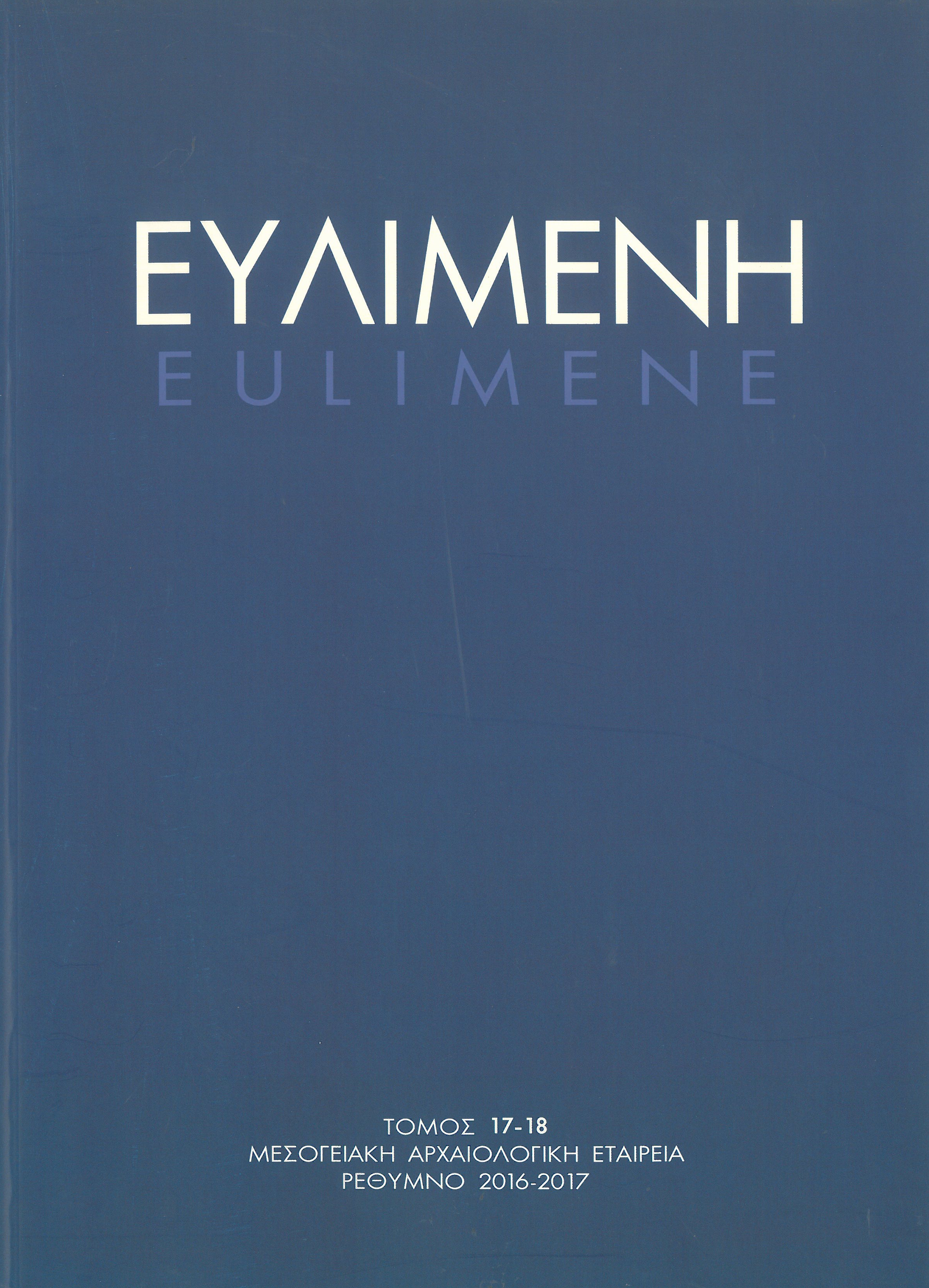Το νεκρομαντείο του Αχέροντα. Παλαιές ταυτίσεις, πρόσφατες θεωρίες, νέες ερμηνείες

Περίληψη
The Acheron Necromanteion: old identifications, recent theories, new interpretations. The present study re-examines the evidence concerning the use of the complex, which was excavated by Sotirios Dakaris on the hill of Mesopotamon in ancient Thesprotia and was identified with the Acheron Necromanteion. The complex was built in the end of the fourth and the beginning of the third century B.C., and consisted of a central three-aisled building with massive stone walls containing a main room and auxiliary chambers, an underground chamber underneath the main room -variously identified to a crypt, a cistern or a cellar-, three annex corridors and a later open courtyard surrounded by rooms. In 1978, the German archaeologist Dietwulf Baatz considered that the site was a fortified residence of a local ruler, also that the central building was a two-storied tower, where six catapults temporarily stood, in the times of the Roman invasion to Epirus (168/167 BC).
However, the architecture, the finds and the stratigraphy has proven that this is untenable. Similarly untenable are various alternative proposals regarding the function of the building, e.g. communal storage building, fortress. Thus, as it is supported by recent geological research, we have maintained the identification of this place with the Necromanteion. Furthermore, a new reconstruction of the ritual actions which were taking place there has been proposed, based on the recent studies which underline the sophisticated architecture of the underground chamber and its unique acoustic characteristics, similar to a modern anechoic chamber, which were certainly relevant to the necessities of the cult of the dead.
Λεπτομέρειες άρθρου
- Τεύχος
- ΕΥΛΙΜΕΝΗ 17-18 (2016-2017)
- Ενότητα
- ΑΡΘΡΑ
- Κατηγορίες
Οι συγγραφείς των άρθρων που δημοσιεύονται στην Ευλιμένη διατηρούν τα δικαιώματα πνευματικής ιδιοκτησίας επί των άρθρων τους, παραχωρώντας στο περιοδικό το δικαίωμα της πρώτης δημοσίευσης. Άρθρα που δημοσιεύονται στην Ευλιμένη μπορούν να χρησιμοποιούνται ελεύθερα για μη κερδοσκοπικούς σκοπούς, χωρίς δικαίωμα τροποποίησης (δημιουργία παράγωγου έργου), με αναφορά στο συγγραφέα και στην πρώτη δημοσίευση. Η Μεσογειακή Αρχαιολογική Εταιρεία διατηρεί το δικαίωμα να δημοσιεύει, να αναπαράγει, να παρουσιάζει στο κοινό, να διανέμει και να χρησιμοποιεί άρθρα που δημοσιεύονται στην Ευλιμένη σε οποιοδήποτε μέσο και μορφή, είτε μεμονωμένα είτε ως μέρη συλλογικών έργων, για όλο το χρόνο διάρκειας προστασίας της πνευματικής ιδιοκτησίας και για όλες τις χώρες του κόσμου. Αυτό περιλαμβάνει, ενδεικτικά και όχι αποκλειστικά, το δικαίωμα δημοσίευσης των άρθρων σε τεύχη του περιοδικού Ευλιμένη, αναπαραγωγής και διανομής μεμονωμένων αντιγράφων των άρθρων, αναπαραγωγής ολόκληρων των άρθρων σε άλλη έκδοση της Μεσογειακής Αρχαιολογικής Εταιρείας, και αναπαραγωγής και διανομής των άρθρων ή της περίληψης τους με χρήση πληροφορικού συστήματος αποθετηρίου.





